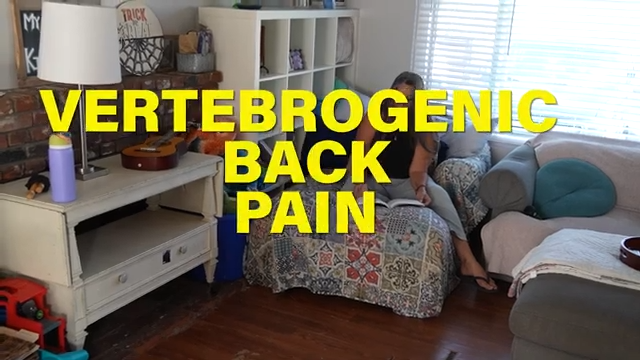PITTSBURGH, Pa. (Ivanhoe Newswire) — Hammertoe is a foot deformity that causes some of the toes to contract up. Mild cases are uncomfortable. Severe cases of foot deformities can create open wounds from the joint rubbing on shoes, infection, and difficulty walking.
Sixty-five-year-old Sue Parsons said she hasn’t felt this good in years. Just last August, her right foot looked like this. First a large bunion near her big toe.
“As it pushed to the right, it pushed up three hammertoes,” detailed Parsons.
Parsons said part of the reason for her deformity was her choice of footwear during 21 years as a flight attendant. When she was in the sky, she was on her feet.
“It was a requirement that if you had a skirt on, or the dress uniform, you were to be in high heels,” explained Parsons.
Eight years ago, Parsons had a procedure on her left foot and waited to treat the right until she could no longer get her foot in any shoe.
“When you have to wear a pair of bedroom slippers to a wedding, that’s saying how far you’ve gone,” Parsons told Ivanhoe.
Parsons found foot and ankle specialist Jessica Sciulli, DPM, at UPMC McKeesport in Pittsburgh, who said surgery was parson’s best option.
Dr. Sciulli explained, “So, whenever you’re doing the hammertoe surgery you actually make an incision over the toe overlying the joint. You release the tendon that’s contracting the toe up.”
Then Dr. Sciulli performed arthroplasty, removing the knuckle of the bone so the toes would be flat.
Seven months after surgery, Parsons can wear her favorite sneakers.
Parsons exclaimed, “Now with the surgery I had, everything is straight in line. It’s beautiful. I have my foot back again. I feel like I’m walking on clouds now. I feel so good.”
Recovery time after surgery varies. Sue Parsons said she was walking without a cane and was pain-free after about ten weeks. Dr. Sciulli said she recommends people not wait until the deformity is severe before they consider surgery. The more severe the deformity, the more drastic the surgery.
Contributors to this news report include: Cyndy McGrath, Supervising and Field Producer; Roque Correa, Editor; Kirk Manson, Videographer.
To receive a free weekly e-mail on Medical Breakthroughs from Ivanhoe, sign up at: http://www.ivanhoe.com/ftk
MEDICAL BREAKTHROUGHS
RESEARCH SUMMARY
TOPIC: FIXING FOOT DEFORMITIES LIKE HAMMERTOE
REPORT: MB #4725
BACKGROUND: Hammertoe is a deformity of one or both joints in second, third, forth or fifth toes. This can cause development problems. The bend can be mild to start then can get worse. They can grow more rigid and if left untreated, nonsurgical treatments will stop working. Hammertoes can be caused by shoes that do not fit properly. Its most common cause is a muscle or tendon imbalance, resulting from mechanical or neurological changes in the foot that occur over time. Hammertoes can also be inherited. Contracture of the toe and open sores are also possible symptoms as well that could lead to the foot deformity.
(Source: https://www.foothealthfacts.org/conditions/hammertoe)
TREATMENT: Diagnosis is usually done through X-rays to see bones and joints of the feet. For treatment, if the toes are still flexible, doctors might recommend wearing more comfortable shoes or those with inserts or pads which can reposition your toe and relieve pain. Low heeled shoes with a deep toe box and flexible material covering the toes can help. Adequate space for the toes can help relieve the pressure as well. Picking up marbles or crumpling a towel with your toes are exercises that can help you stretch and strengthen muscles in the toe. There is also the option of surgery to release tendon.
SURGERY: Resection is the removal of bony prominence in a toe joint. Tendon transfer, lengthening or release is re-routing the tendon to put it in a more balanced position. Metatarsal shortening is when doctors shorten the long bone to provide more space for the toe to extend. There is also the option of toe implants, which are an alternative to traditional surgeries. The new procedure inserts a small screw into the bone, which then preserves the correction and is permanent. If you use the implants, recovery is simple. Healing takes a few weeks with full recovery occurring in at most two months. Full recovery may take up to six months where patients must stay off their feet and wear open-ended shoes. The success rate is 85 to 90 percent.
(Source: https://www.myfootandanklecenter.com/blog/new-advancements-for-hammertoe-surgery)
FOR MORE INFORMATION ON THIS REPORT, PLEASE CONTACT:
Rick Pietzak, Senior Manager, Public Relations
UPMC-University of Pittsburgh Medical Center
412-864-4151
If this story or any other Ivanhoe story has impacted your life or prompted you or someone you know to seek or change treatments, please let us know by contacting Marjorie Bekaert Thomas at mthomas@ivanhoe.com




